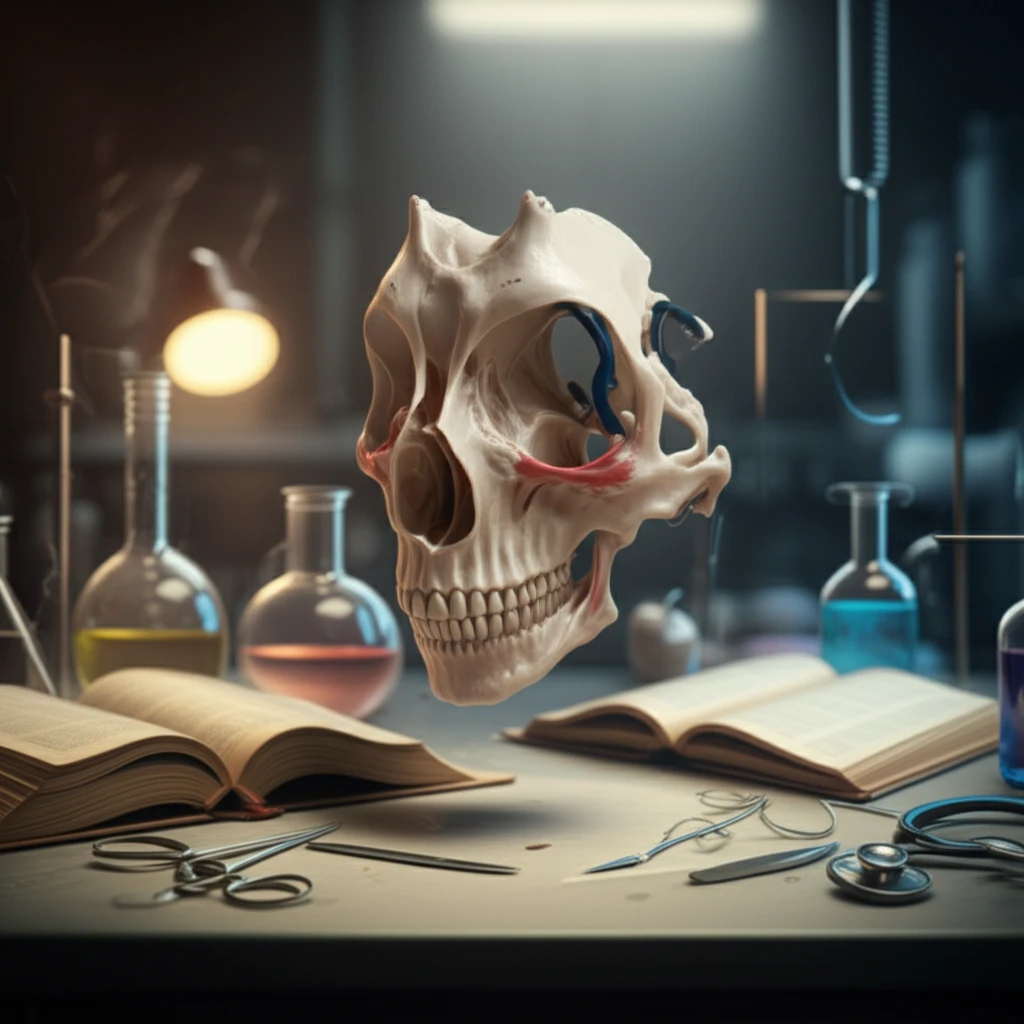
Unlock the Secrets of the Pterygopalatine Fossa: How 3D Printing is Revolutionizing Anatomy Education
"Discover how a low-cost 3D model is transforming the way medical students and professionals understand this complex anatomical region."
For medical students and seasoned practitioners alike, navigating the complexities of human anatomy can be a daunting task. One particularly challenging area is the pterygopalatine fossa (PPF), a small but incredibly important space nestled deep within the skull. Traditional methods of teaching, such as cadaveric dissections and textbook diagrams, often fail to convey the intricate three-dimensional relationships of this region effectively.
The pterygopalatine fossa is a complex bony space located at the skull base, housing critical neurovascular structures. It's often described as an 'inverse pyramid,' situated just behind the eye socket. Its boundaries are formed by several bones, including the sphenoid, palatine, and maxillary bones. The PPF contains the pterygopalatine ganglion, branches of the trigeminal nerve, the maxillary artery and its branches, veins, and fatty tissue. All of these structures make understanding the PPF challenging.
Enter 3D printing – a revolutionary technology that's transforming medical education and practice. By creating tangible, anatomically accurate models, 3D printing is helping students and professionals alike to visualize and understand complex structures like the PPF in a way that was never before possible. This article delves into how researchers are using affordable 3D printing to unlock the secrets of the pterygopalatine fossa, offering a new perspective on this critical anatomical region.
Why the Pterygopalatine Fossa is So Difficult to Visualize

The pterygopalatine fossa's complexity stems from several factors. First, its location deep within the skull makes it difficult to access and visualize during traditional cadaveric dissections. Second, the PPF's intricate three-dimensional shape and the numerous structures that pass through it are hard to represent accurately in two-dimensional diagrams. Finally, the spatial relationships between the PPF and surrounding structures, such as the orbit and nasal cavity, can be challenging to grasp without a tangible model.
- Location: Deep within the skull, making it hard to see during dissection.
- Complexity: The PPF has a complex 3D shape, which 2D diagrams can't fully show.
- Spatial Relationships: Hard to understand how the PPF relates to nearby structures without a physical model.
The Future of Anatomy Education is 3D
The development of a low-cost 3D model of the pterygopalatine fossa represents a significant step forward in anatomy education. By providing a tangible and accurate representation of this complex region, 3D printing is empowering students and professionals to deepen their understanding of anatomy. As 3D printing technology continues to advance and become more accessible, it's likely to play an increasingly important role in medical education and practice.
